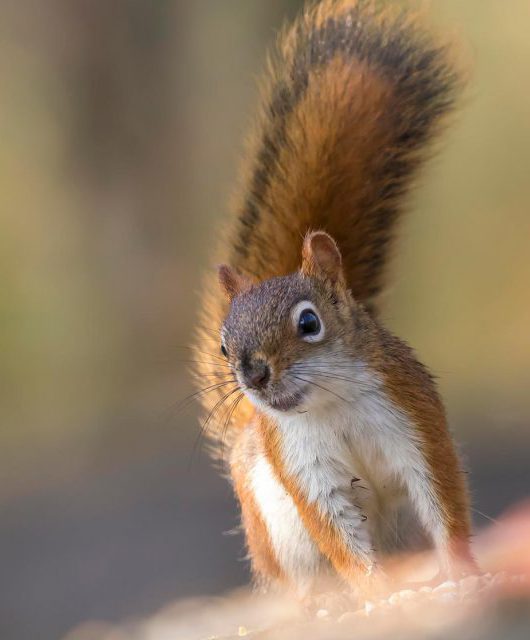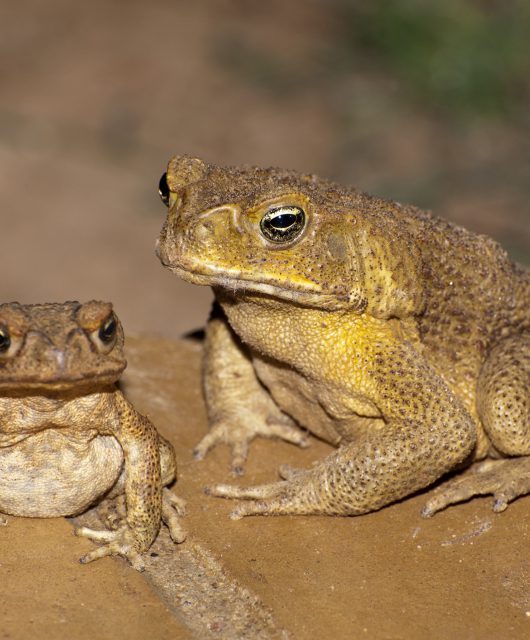The devastating floods in British Columbia have shattered roads, homes, businesses and communities.
But they have also raised hopes that together we can build back better, prioritizing not just how people commute from place to place, but also how salmon navigate the rivers on their epic and critical migrations from fresh water, to salt water and back again to reproduce.
Changing Climate on a Changing Landscape
When we talk about climate change as a whole, it can seem like such a big issue to tackle that it leaves us feeling hopeless. The unprecedented heatwave this summer resulted in massive wildfires in British Columbia and elsewhere across Canada. Then heavy rainfall hit these same areas this winter, and massive floods resulted. How we manage our landscapes can play a large role in how climate change affects our communities. While we may not be able to control the weather, we can ensure we have healthy, resilient landscapes – and infrastructure – that are managed with climate change at the forefront.
Fires and Floods
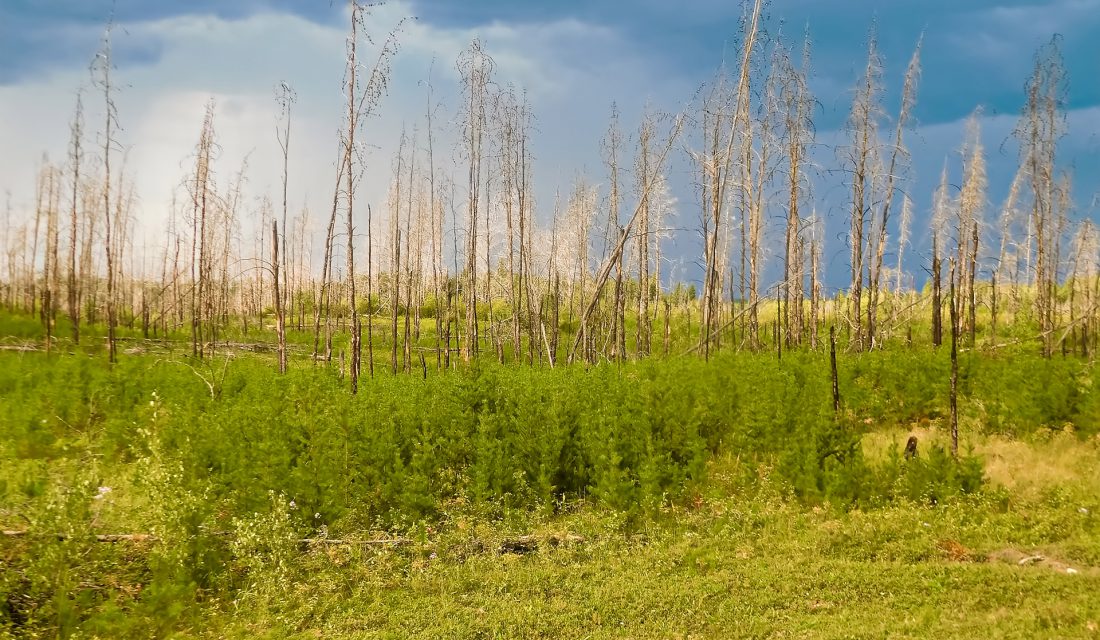 Areas that have been cleared for forestry, farming and urban development can create heat islands where snowmelt occurs faster and water is shed more quickly from hillsides. Wildfires will naturally burn through a grassland ecosystem like those in the Southern Interior of BC quickly and at relatively low temperatures. The introduction of invasive species such as cheatgrass and Scotch broom, and overgrazing by cattle can lead to fewer native bunchgrasses and denser clusters of sagebrush that can burn hotter and longer and act as ladder fuels into forested areas. In forested areas, forestry practices can result in the removal and replacement of deciduous trees that hold moisture better with coniferous stands made up of the same age and species, which burn hotter and longer when wildfires run through.
Areas that have been cleared for forestry, farming and urban development can create heat islands where snowmelt occurs faster and water is shed more quickly from hillsides. Wildfires will naturally burn through a grassland ecosystem like those in the Southern Interior of BC quickly and at relatively low temperatures. The introduction of invasive species such as cheatgrass and Scotch broom, and overgrazing by cattle can lead to fewer native bunchgrasses and denser clusters of sagebrush that can burn hotter and longer and act as ladder fuels into forested areas. In forested areas, forestry practices can result in the removal and replacement of deciduous trees that hold moisture better with coniferous stands made up of the same age and species, which burn hotter and longer when wildfires run through.
These hot fires can damage soils and cause a moisture-repelling layer to form that prevents water from infiltrating into the soils. In addition, removal of vegetation from stream banks can lead to destabilization of stream channels, causing soils to erode and become mobilized more easily, and potentially causing log jams to form over time and burst during storm events. Logging on steep slopes with poor stability can also lead to landslides during heavy rainfall events.
Fertile Valleys
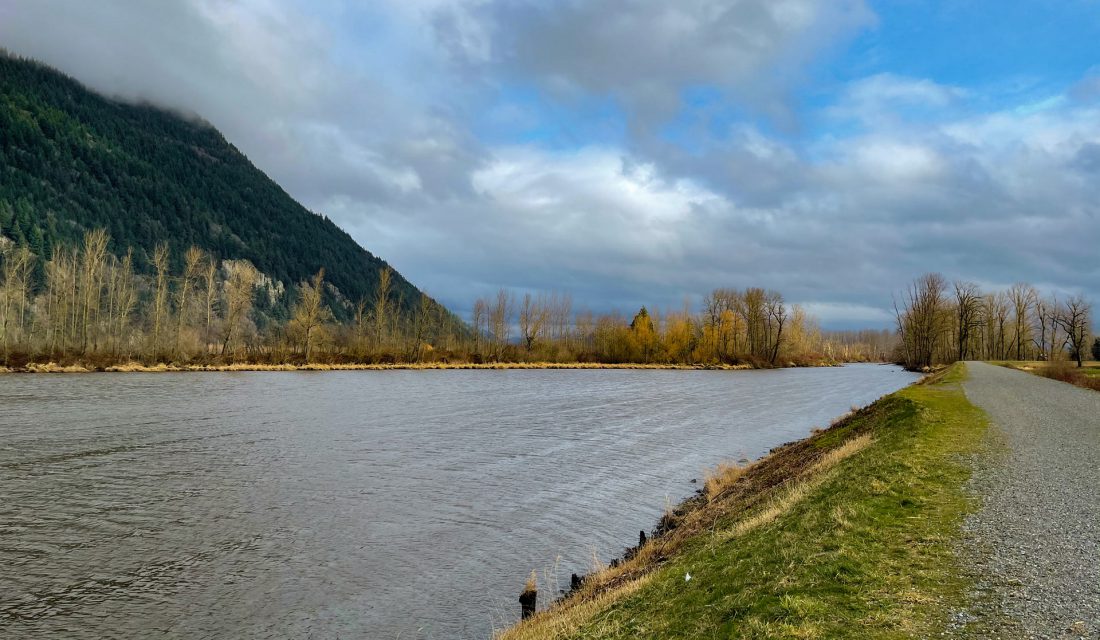
The Fraser River floodplain is highly productive and fertile, with the Fraser Valley being the heart of agricultural production in southern BC. These fertile soils were once replenished with seasonal flooding by the Fraser River during spring snowmelt. In its more natural state, the Fraser River channel would have historically migrated throughout the Fraser Valley, breaking through banks and forming new channels over time, as it flowed out to sea, while spreading the sediments mobilized by river currents throughout the valley bottom as it migrated.
However, as the Fraser Valley became more and more desirable to live in, the river has become channelized and diked to make room for homes, farms and businesses. In addition, a large, biologically diverse and culturally important lake known by the Sumas Nation as Semá:th (Sumas) Lake formed by the flow of the Nooksack River in the United States was drained and diked in the 1920s to make room for more farms and communities in the Fraser Valley.
These same dikes that protect our homes during all but the highest flood events also force the rivers to build up instead of outward during storm events, and can be overtopped during major storms. Straighter, deeper channels can also increase the power of the river, increasing its capacity to rip out vegetation and infrastructure in its path. Removing riparian vegetation can destabilize stream banks, and draining lakes and wetland for agriculture can prove challenging for keeping water out of these low-lying areas. Landscape practices and summer wildfires combined to form the perfect storm when unseasonably high rainfalls hit southern BC last November.
The Road to Recovery
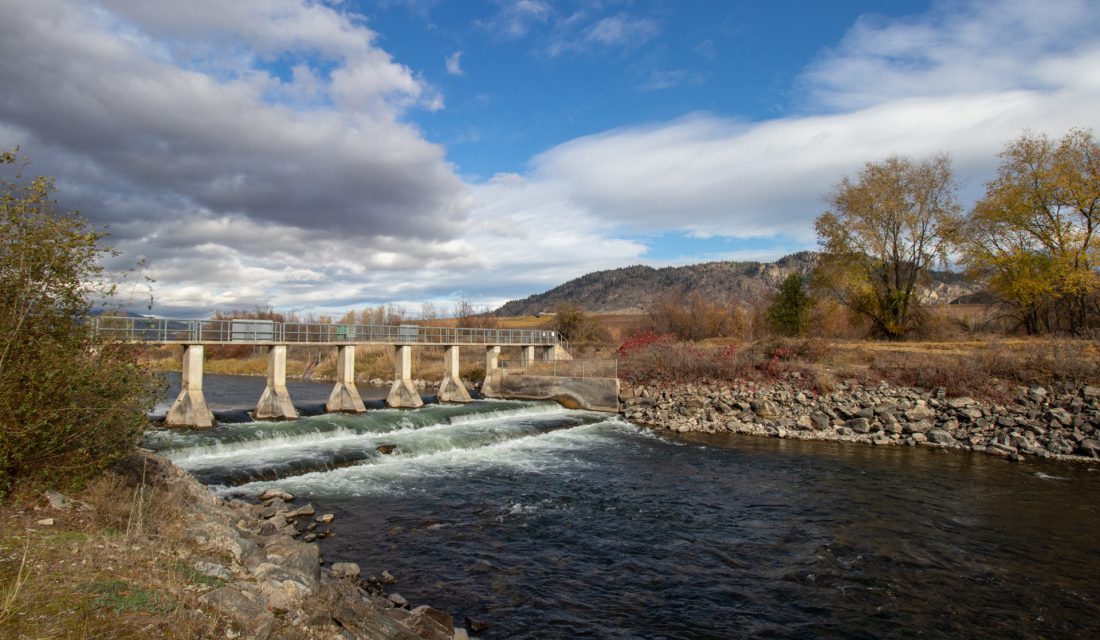
Infrastructure such as flood gates, pump stations and stream crossings are often designed with the sole interest of managing water movement through our infrastructure (dikes, roads, railways). The Fraser dike system is managed by a series of canals, flood gates and pump stations that can block access to critical, productive off-channel feeding and rearing areas for fish, and worse still, some pump stations and flood gates can actually kill fish during their operation.
There are an estimated 170,000 road stream crossings in BC alone on fish-bearing streams, and an estimated 92,000 of these are closed bottom structures (culverts) that can partially or fully block fish passage. In some cases, the culverts may be too small, causing flows to be too high for fish to swim through. In other cases, a flat-bottomed culvert may have flows that are too low for fish to safely swim through. And in many cases, the bottom of the culvert may become perched above the stream bed, preventing fish from getting up into the culvert in the first place.
By moving salmon to the forefront of designing and rebuilding, we can make sure that we have both healthy, resilient communities and healthy, resilient ecosystems. As we work to rebuild our highways and look towards the future of our flood protection systems in BC, let’s make sure that fish are a part of the equation.
From Acknowledgement to Action
 In the short term, non-profits and government agencies are working to sort out the extent of the damage to salmon populations resulting from the floods. Many of the salmon eggs that were laid this year will have been washed away or buried in gravels in streams that received the brunt of the winter storms. Some groups are visiting flooded areas that are no longer connected to the Fraser River and rescuing fish that have become trapped in farmers’ fields.
In the short term, non-profits and government agencies are working to sort out the extent of the damage to salmon populations resulting from the floods. Many of the salmon eggs that were laid this year will have been washed away or buried in gravels in streams that received the brunt of the winter storms. Some groups are visiting flooded areas that are no longer connected to the Fraser River and rescuing fish that have become trapped in farmers’ fields.
Looking forward, the Pacific Salmon Foundation is spearheading the development of a landscape recovery “playbook” to guide recovery of landscapes and streams for salmon following wildfires.
While the floods have caused some temporary setbacks to salmon populations, they have also provided an opportunity to build our infrastructure back better in the long term, in a way that better protects both our communities and that of fish and aquatic life. Watershed Watch Salmon Society is working tirelessly to encourage governments to invest in fish-friendly flood infrastructure in the Lower Fraser through their Connected Waters Campaign.
Many agricultural producers are recognizing the importance of balancing their practices with environmental stewardship, creating healthy, resilient ecosystems that in turn leave behind healthy, resilient ranch land, like this rancher in the Nicola Valley, who has restored riparian corridors on the ranch to benefit fish and wildlife while protecting the ranch from the worst of this year’s floods.
Show Your Support

Join Watershed Watch Salmon Society’s letter writing campaign to tell Prime Minister Trudeau and Premier Horgan to invest in salmon-friendly infrastructure. The BC government is working tirelessly to reopen highways and critical linkages to get BC moving again. The efforts that they have made to-date are nothing short of heroic. However, as we look to the permanent rebuilding of these linkages, let’s make sure that the critical linkages to fish habitat are not left behind.
The Province of BC declared a State of Emergency on November 17, 2021, one day after Regional Chief Teegee and other BC First Nations leaders called on the province to do so. First Nations are 18 times more likely to be evacuated due to emergencies than non-First Nations and are still battling COVID-19 on top of flooding, the aftermath of wildfires and infrastructure damage as they move into the winter season.
“We are the most at risk during these catastrophic climate events, which are sadly no longer isolated incidents but ongoing repercussions of climate change,” said British Columbia Assembly of First Nations Regional Chief Terry Teegee in a recent Assembly of First Nations press release.
External Links:
Note: The views of the sites listed here are those of the authors and not necessarily those of the Canadian Wildlife Federation.

